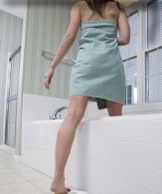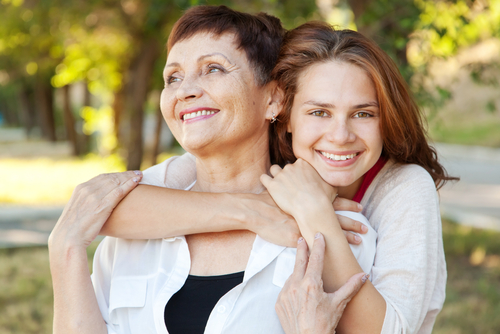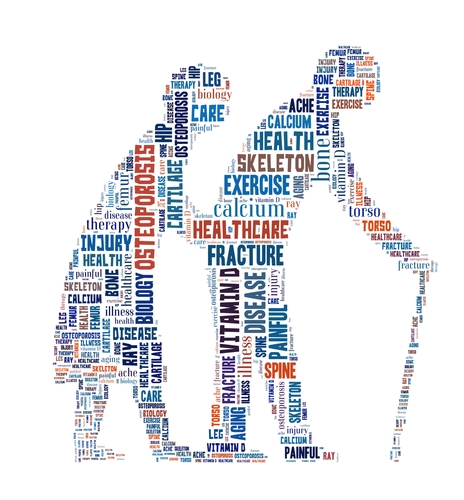Fear of falling
Facing the Fears Head-On
As people age and their health and mobility declines, even the healthiest, fittest individuals are more prone to falling. A CBS online news report states that one-third of seniors over 65 fall each year, and of those, 50 percent fall repeatedly. However, it isn’t only the falls themselves that pose a problem; just the fear of falling increases these numbers and creates a self-fulfilling prophecy.
"The fear of falling is both the cause of the falls and a consequence of falls," said Dr. Pat Miller in the CBS.com report. Among the elderly, "It's a bigger fear than fear of being robbed."
Dr. Miller is an assistant professor of occupational therapy at Columbia University, who cautions that living with a fear of falling can have serious consequences. According to her research, the negative thoughts about falling begin to impair mobility, leading to an increasingly sedentary lifestyle and even less mobility, or what she calls, “…an inactivity cycle that spirals downward.”
How can seniors overcome this legitimate fear, and decrease the actual risk of suffering a debilitating or even fatal fall? Following are examples of how lifestyle changes and specific products have addressed this issue.
Marianne, Age 68
Marianne and Walt were the life of the party. They married young and had children almost ten years later, so the early years of their marriage were filled with fun and friends. They hosted parties that went on for days, with Marianne showcasing her excellent cooking skills by feeding their many guests.
In those days everyone smoked, and Marianne and Walt were no exception. They both continued smoking heavily for years, and didn’t quit until they were well into their fifties. By then, Marianne had developed COPD and required oxygen. Her breathing and mobility were also impaired by obesity. Marianne’s oxygen needs were a burden to her and she disliked bringing it anywhere, so they didn’t socialize or go out much anymore. Their son and daughter were now grown, so Walt managed much of the care of their household, and assisted Marianne with personal care as well.
At age 70, Walt suffered a fatal heart attack, leaving Marianne to manage on her own for the first time in her life. She hadn’t driven a car in years, was unsteady on her feet and unable to walk long distances, and she had difficulty getting dressed by herself. Although she still loved to cook, she couldn’t get to the store unassisted or reach many of her kitchen items, and she was afraid to try to climb a stepstool for fear of falling.
After doing some research and consulting Marianne’s physician, her daughter helped her purchase several items that would tremendously improve Marianne’s activities of daily living.
“I don’t feel helpless anymore,” says Marianne. “The supermarket is a few blocks away, and Walt always used to drive me. Now I can walk there whenever I want.” Drive Medical’s Heavy Duty Bariatric Rollator safely supports up to 500 lbs., has a large, padded seat and a storage basket for Marianne’s groceries. In bad weather, the rollator folds easily to go into a car or taxi.
Drive’s Oxygen Cylinder Carry Bag gives Marianne portability. “I don’t have to worry about carrying the oxygen tank or stopping to catch my breath every block. The bag is inconspicuous and attaches to the rollator, or I can carry it on my shoulder. Now I go out to eat or to my grandchildren’s school events and nobody even notices it.”
Several of Drive’s Lifestyle products helped Marianne at home as well. Getting dressed was no longer a problem with the Stocking Aid, Extra Long Shoe Horn and Lifestyle Dressing Stick, while Drive’s 32” Hand-Held Reacher and Footstool with handrail and non-skid rubber platform enable her to safely reach items in her highest kitchen cabinets.
“I can cook for my kids and grandkids again. These aren’t big things, but they make everything so much easier! I never even knew these things existed before, but now I don’t know what I’d do without them.”
Nate, Age 72
Nate was always an outdoor guy. Born and raised in Colorado, he grew up fishing, camping and hiking in the mountains near his home. At age 55, Nate sold his engineering company in Denver and retired with big plans to enjoy the lifestyle he loved. He and his wife bought a large home and property much farther away from the city, and for years, Nate was more active outdoors than ever…until the day he took a fall while out hiking with his three dogs, and suffered a severe ankle injury.
When Nate was able to return home after rehabilitation, his spirits were low. He wanted to go back outdoors, but was afraid those activities might be over for him. He felt more fragile than he ever had in his life, and he didn’t want to risk another fall and injury. Even walking his dogs was difficult, since his mountain home did not have sidewalks. Nate’s physical therapist had recommended he get a knee walker to help him get around. But after talking to other people who had used one, he wasn’t sure it would be worth it.
“People would tell me that the knee walkers are only good for getting around in your home or on sidewalks,” says Nate. “Then I discovered this gem. I can go outside and get anywhere I want to go. It handles uneven ground just fine.”
Nate’s “gem” is Drive Medical’s Knee Walker. His orthopedic surgeon said it was the first one he had seen with large wheels, and was impressed by its smart design.
“After my ankle surgery, I can’t put weight on that foot for a long time. I am a very active person, and the idea of not being able to get around was difficult for me. Other knee scooters do just fine indoors, but I wanted one that would work on sidewalks... pavement... gravel and dirt roads. I want to get out and about! It's summer in Colorado, and I can't stay indoors.”
“This scooter does the trick. It's heavy duty, very stable, and easy to use. I've tried it on gravel roads, on pavement, on grass, and it handles them all. It was easy to set up and easy to use. One wheel in back means that my good leg can swing, so I can be quite efficient getting around. And I love the basket; it looks kind of goofy, but what the heck—it's useful!”
“Indoors, I’m using crutches, and they are fine. But now I’m taking mile-long scoots with my dogs, and we are all much happier. Happier me means faster recovery.”
Rather than living with the fear of falling, attack the issue head on. Safeguard yourself or your loved one and use Drive’s Medicals fall prevention resources and guides to help you along the way,
Drive's Fall Prevention Resource Page
View our fall prevention resource page to see more related articles.
The Most Dangerous Room in the House
Most falls occur in the bathroom, make simple modifications to stay secure.
Strategies to Keep Your Loved Ones Safe.






